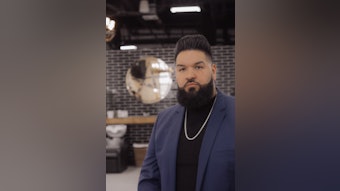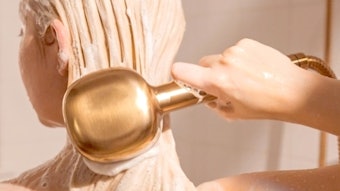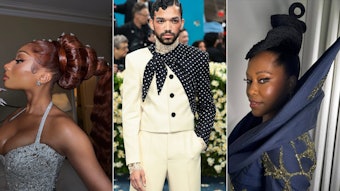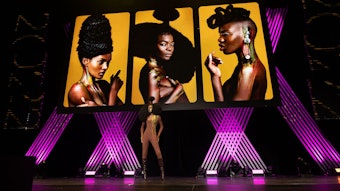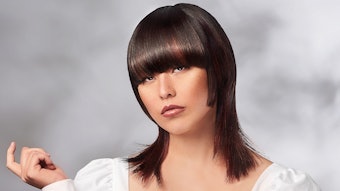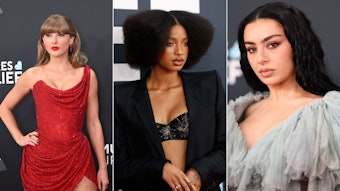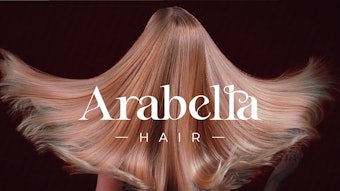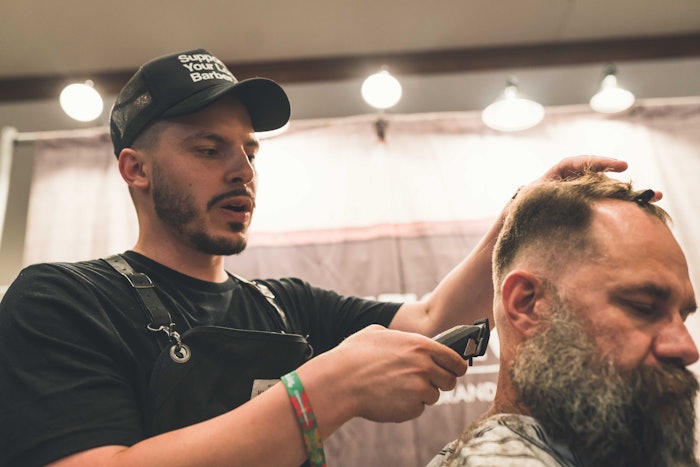
As the summer season heats up, so do client requests for fresh, stylish cuts that are both functional and fashionable. For barbers and stylists alike, staying current with the latest cuts and styling techniques isn't just optional — it’s essential to meet the demands of their clientele. But, these emerging trends aren’t just influencing client requests — they’re reshaping the barber industry from the inside out. Barber pros are expanding their skill sets and redefining traditional services. The rise of gender-neutral styling is driving a larger evolution in the craft — blurring the lines between barbering and cosmetology, with pros making their services inclusive to anyone who walks through their door. To learn more, leading barber educators and leaders share how the latest trends and industry changes are pushing barbering into a bold new era.
Trending Cuts and Styles
In the thick of summer, your clients may be interested in a chop to beat the heat or a new style to sport on vacation, a day at the beach, a family party or another special occasion. When your clients are deciding on their new look, it's likely they are paying attention to the latest hair trends, so it's important to stay up to date.
According to the pros, the latest hair trends in the barber industry are all about texture, movement and shape, with clients wanting a versatile, polished look that shines on social media or in a professional setting. Much like current color trends, clients are embracing effortless, lived-in cuts and styles that work with their natural hair pattern and texture.
Master Hair Cutter, Educator and ARROJO NYC Founder Nick Arrojo (@nickarrojo) shares that this is why razor cutting techniques are becoming popular again: "It delivers that perfectly imperfect, airy finish people love."
Andis Global Educator Stormi Kelly (@juststormi) says clients are embracing longer cuts with strong detailing and those that accentuate natural bone structure.
"This evolution is strongly influenced by the hip-hop industry and streetwear culture, where individuality, heritage and effortless confidence are celebrated," she explains.
Barber Educator and NAHA winner Rodrick Samuels (@rodricksamuels) adds that nostalgia with a modern edge is influencing the latest trends, which include tapered afros, textured crops, clean low fades with curly tops and the throwback '90s high-top.
"Some of the current trends are shaggy layers and modern mullets," award-winning barber educator Tyler Kelbert (@tyler_kelbert) adds. "Curtain bangs, face-framing layers, pixies and crop cuts are also popular with those who want a bold and expressive style. There are a variety of requests from textured crops, drop fades and skin tapers from my clients. Clean, detailed work is getting more appreciation, especially with the rise of high-def grooming content online. Other requests are buzz cuts with designs or color. Messy pompadours and quiffs are popular with my clients that want a classic vibe with a modern edge."
Barber and shop owner Rachel Brown (@barberologist_) says her clients are making the big chop and getting buzz cuts after years of hair grow out, perms and other high-maintenance cuts and styles.
"I’ve been seeing a lot more clients opting to shave off all their hair," she says. "I’m talking old school, high and tight, bald fade with a two on top and a line up! Talk about satisfying — I love when clients want to do a major transformation!"
How to Stay Up to Date
With a busy schedule inside and outside the barbershop or salon, it can be difficult to stay updated and informed on the latest trends sweeping the industry, especially if you don't know where to turn with so many options available at your fingertips. But, if you aren't paying attention, you're already behind. Here's how these barber pros find their inspiration:
Kelbert shares that he follows industry influencers to observe trends as they happen.
"I also attend events, network and engage with communities where I can see trends first hand. I find time spent with other professionals has also helped me stay aware of the latest trends," he says. "I attend shows, experiment and practice to refine my craft. Another aspect I feel is important is staying updated on tools and products to ensure I am using the best gear to achieve those trendy looks efficiently."
As educators, Samuels and Nick Arrojo find trend inspiration in the classroom, whether they are teaching or learning.  "Real talk: if you’re the smartest one in the room, you’re in the wrong room." Courtesy of Rodrick Samuels
"Real talk: if you’re the smartest one in the room, you’re in the wrong room." Courtesy of Rodrick Samuels
"I stay tapped in with the streets and the runways. I’m watching TikTok cuts, UK barbers, LA stylists, and what’s coming out of Korea all in the same day," Samuels adds. "Real talk: if you’re the smartest one in the room, you’re in the wrong room."
Kelly adds fashion, sports and music are the most powerful influences for what's next. Brown also has her eye on the entertainment industry, saying she looks to award shows, red carpets and movies for trend inspiration.
Blending Trends Into Your Personal Style
While keeping up with the latest trends and incorporating them into your service is important to grow and thrive in the industry, you don't want to let trends define or drown your personal identity or brand. It needs to be a balancing act — staying authentic to you while offering modern, elevated services that will bring clients to your chair. But how do you find what works? How do you set yourself apart and stand out in a sometimes overwhelming social landscape?
You first have to know and understand your brand — something Samuels and Kelbert emphasize.
"It’s simple — know who you are. I don’t chase every trend — I evaluate if it fits my brand. Authenticity sells more than trends. I teach my students that your signature will last longer than your swipe," Samuels says.
 "I stay educated on what’s hot, but choose which trends align with my brand and clientele. I choose to be a guide, not the order taker."Courtesy of Tyler Kelbert
"I stay educated on what’s hot, but choose which trends align with my brand and clientele. I choose to be a guide, not the order taker."Courtesy of Tyler Kelbert
It's also important to consider your client's lifestyle and features before running with any trends, as certain cuts and styles are not one-size-fits-all.
Kelly says honesty and collaboration are the foundation of her approach when guiding clients toward their ideal look.
"I always meet my guests halfway," she explains. "If a look doesn’t enhance their features or align with their lifestyle and maintenance needs, I won’t compromise my integrity. Instead, I respectfully refer them to an artist better suited for their vision. As an artist, I want to be proud of every look I create. I tell my clients, ‘I don’t do one-sided relationships, we both have to look good.’"
"If a client asks for a trend that doesn’t suit their hair or lifestyle, I recommend a version that works for them," Kelbert continues. "This way, I build trust, and they’ll come back because they know I am honest and a visionary."
Impact of Trends on the Barber Industry
Trends play a crucial role in the daily lives of every hair professional, offering insight into current culture and revealing what clients value — whether it's simplicity or bold, dramatic transformations. Staying attuned to current hair trends not only helps you attract and satisfy clients, but also plays a key role in shaping your personal brand. As trends evolve, they provide opportunities to expand your skills, master new techniques and stay competitive in the ever-changing hair industry. Embracing trends isn’t just about keeping up; it’s about growing and thriving.
But, in the barbering industry, the latest trends are driving a cultural and creative shift that is transforming and broadening the field.
Brown shares that new services, such as scalp micro pigmentation (SMP) and male hair units, are making their way into the industry to provide more options for clients struggling with hair loss or thinning to build their confidence.
Kelbert has also noticed this change, saying more salon-style services are making their way into the barber industry.
"These services include blowouts, coloring and perms, as well as skin care, which is becoming more common," he explains. "Another change is a demand for gender-neutral cuts and services. Clients want style over stereotypes. Barbershops that feel inclusive and welcoming to all genders, hair types and backgrounds are thriving and becoming industry leaders."
Samuels says the role of the barber pro is also evolving, becoming more multi-faceted and demanding, as they take on roles as educators and influencers.  "If you’re not offering something that feels elevated, clients will skip you for someone who does."Courtesy of Rodrick Samuels
"If you’re not offering something that feels elevated, clients will skip you for someone who does."Courtesy of Rodrick Samuels
"Barbers are now hybrid artists — part-content creator, part-therapist and part-entrepreneur. Shops are turning into studios. Tools are evolving. If you’re not offering something that feels elevated, clients will skip you for someone who does," he says.
"It is important for barbers to teach either in-person or online to build extra revenue streams," Kelbert adds. "I feel the barber of the future isn’t just cutting hair, they're creating content, inspiring trends and building a legacy."
What's Next for Barber Pros?
The barber industry is rapidly growing and evolving on a global scale. According to market research, the global male grooming market is projected to reach $110 billion by 2030, growing at a compound annual growth rate (CAGR) of 5.5%.
With this massive growth, Samuels expects to see more collaborations with fashion, skin care and tech brands in the barber space.
New technological advancements are also making their way into barbershops to help increase efficiency for pros and their clients.
"In the future, expect more tech in the shop — from online booking apps using AI to AR try-on mirrors, mobile payment systems and CRM tools," Kelbert says. "If barbers don’t expand their abilities or build an online platform, they will find themselves losing growth."
With more salon-style services making their way into the barbering industry, the line between barbering and cosmetology is continuing to blur, and it's only accelerating, due to changing client expectations and industry demands.
"Clients today want a one-stop shop — a place where they can get everything from fades and beard trims to balayage and fashion color treatments. That convenience drives the need for professionals who are cross-trained and can deliver both precision cuts and advanced color services," Kelly explains.
This also impacts the techniques pros practice and use daily in the salon.
 "The best barbers will be the ones who can mix precision with artistry, who know how to cut for the individual, not just the trend."Courtesy of Nick Arrojo
"The best barbers will be the ones who can mix precision with artistry, who know how to cut for the individual, not just the trend."Courtesy of Nick Arrojo
Cosmetologists Embrace the Barber Scene
As more cosmetologists enter the barber scene to expand their offerings to be more inclusive and service the wide variety of clients who walk through their door, there are plenty of new skills they need to learn.
"Barbering is a whole different rhythm. It is all about pace, flow and precision. Timing is faster, fades are cleaner and there’s often less fluff and way more detail. You’ll be working more with clippers, trimmers, razors and sharper detailing than with shears alone. Cosmo schools usually don't go deep on clippers, so you’ll need to build your fade game, taper transitions, lineups and learn to work with and without guards," Kelbert explains. "If you’re transitioning into cutting all types of short hair, you’ll have to get comfortable with curly, coily, coarse and straight textures."
The pros also emphasize a crucial principle to adopt: Respect the craft and fundamentals.
"Cosmetologists often come in with great styling and finishing skills, but barbering requires precision, control and a different way of approaching shape," Arrojo says.
"Don’t skip the fundamentals. The blend, the weight distribution, the art of the line-up — those are things you can’t fake," Samuels adds.
Kelly advises beauty professionals looking to break into the barbering industry to learn its unique culture and language to build your reputation and gain respect. However, she also stresses the importance of staying true to your own identity and values.
"Barbering is a culture, a brotherhood, and it has its own rhythm and dialogue. Understanding that is crucial to earning respect. Because this industry is still largely male-dominated, it’s essential to hold firm to your core values and morals. Take your craft seriously — your skill is your voice. Barbers are fiercely protective of their territory and tradition. They’ll test you — not out of hate, but in defense of the craft. Don’t take it personally. And when they come for you? Be tough enough to bark back. Respect is earned, and sometimes that means standing your ground while still showing up with skill, professionalism and authenticity," she says.  "Barbering is a culture, a brotherhood, and it has its own rhythm and dialogue. Understanding that is crucial to earning respect."Courtesy of Stormi Kelly
"Barbering is a culture, a brotherhood, and it has its own rhythm and dialogue. Understanding that is crucial to earning respect."Courtesy of Stormi Kelly
While barbering may be a whole different rhythm you will have to learn, Kelbert wants to remind cosmetologists entering the barbering that they aren't starting over — they're evolving.
What Can Be Done Better?
To keep up with the growing and evolving nature of the barbering industry, changes need to be made. The best place to start is in the classroom — Updating barber school curriculums is essential to prepare the next generation of professionals for the demands of modern barbering. This includes equipping them to deliver inclusive, on-trend services, create engaging content, run their own businesses, prioritize their health and well-being and establish clear boundaries.
Kelbert shares what he thinks students need most from their barber schools: "What is needed are courses on fades, texture, long hair cutting, digital marketing, branding and pricing structure. I would like to see more affordable or sponsored workshops, online platforms and mentorship programs. I wish I had been given education on pricing, taxes, retirement planning and passive income. I believe it is important that industry leaders and educators set the tone for healthy boundaries and self-care. It is so easy to overwork yourself by taking care of others, while ignoring your own health and well-being."
 "I think learning more about how to properly pay taxes, save, and invest for retirement/future outside of behind the chair is something that’s not talked about or taught, but super important to our industry."Courtesy of Rachel Brown
"I think learning more about how to properly pay taxes, save, and invest for retirement/future outside of behind the chair is something that’s not talked about or taught, but super important to our industry."Courtesy of Rachel Brown
"I think learning more about how to properly pay taxes, save, and invest for retirement/future outside of behind the chair is something that’s not talked about or taught, but super important to our industry," Brown echoes. "Understanding how booking systems work and how to properly manage your clients and prices is equally important as being a good service provider."
Inside of the industry, Kelly hopes to see more opportunities for pros to grow and more inclusivity for cosmetologists that are eager about joining the barbering community.
"[We need to continue] to create opportunities for barbers to grow not just behind the chair, but as educators, entrepreneurs and cultural influencers. From the barber side, the delivery of education is often presented as a barber-to-barber conversation, which can alienate others, especially cosmetologists who don’t speak the same technical language. A more inclusive approach could help build mutual respect and skill-sharing," she says.
Essential Barbering Staples
If you want to grow your craft, you need to invest in the proper tools. Whether you are a cosmetologist/hairstylist looking to add barbering services to your books, a recent grad or a continuing pro looking to restock your supplies, our pros recommend the essential staples that help them elevate their craft.
For beginners, Kelly recommends starting with one clipper and trimmer.
"It’s important to check the weight and feel of the clipper in your hand — it should be ergonomically comfortable. Look for a model with a mid-range motor speed to help you maintain control and build confidence without feeling overwhelmed. This approach prevents discouragement and sets a strong foundation for developing your skills," she says.
While quality tools, such as shears, clippers and razors, are non-negotiables, it's also important to consider the products that help you with the finish.
"I also think a strong product range is essential — pomades, pastes, dry shampoo, styling sprays — because finishing sells the look," Arrojo explains.
Samuels emphasizes the importance of professionals maintaining a strong image and presenting themselves thoughtfully in the barbershop or salon, starting with the appearance of their station. He also highlights the critical role mindset plays in building both their personal identity and professional brand.
"Invest in lighting, mirrors, a great chair and your image. Your client experience is your brand," he says. "Let me be clear — if you’re serious about leveling up, you need to invest in your mindset just as much as your tools. My new book, 'The Silent Work,' breaks down the mental, emotional and spiritual grind that comes with this industry. The work that no one sees, but everyone benefits from. That’s the real cheat code."
Top Tips to Grow Your Skills
If the latest trends and changes in the barbering industry have you feeling fired up, now is the time to start honing in on your craft!
Of course, practice (and repetition and consistency) makes perfect! To get hands-on, work with mannequin heads and real people. Kelbert shares mannequins will help you learn precision, while live models will teach you pressure and adaptability. Arrojo also suggests filming yourself while you're cutting to watch what your hands are doing and see where you can refine your skills to be more precise. If you find that the techniques you want to practice are not targeted toward your current clientele, Brown recommends offering a free model call service.
"It will not only bring in a new face and opportunities for future services, but you’ll also get to spark that fire inside you again and get those creative juices flowing," she shares.
Continuing education is also crucial. Arrojo encourages pros to never stop learning, saying the best pros are students for life. He also emphasizes the importance of foundational education outside of trend tutorials.
For types of classes to look into, Samuels and Kelbert both recommend taking barber-specific education.
"Stylists need to start working on their clipper confidence — practice with them daily, mainly working on fades, tapers and line ups," Kelbert says. "They need to learn about lever play, guard systems and how to three-tooth with the clipper to knock out dark areas. Learning the razor game is also important. Stylists should stay consistent and practice fades or beard work every week."
Hair shows are also a must — not only to elevate your skills, but connect and network with fellow professionals.
"Hair shows are invaluable. They offer hands-on education, live demos, diverse classes and the opportunity to connect with peers in an unmatched artistic atmosphere. Whether you’re watching platform artists or participating in hands-on workshops, you’ll walk away inspired and better equipped," Kelly says.  "Hair shows are invaluable. They offer hands-on education, live demos, diverse classes and the opportunity to connect with peers in an unmatched artistic atmosphere."Courtesy of Stormi Kelly
"Hair shows are invaluable. They offer hands-on education, live demos, diverse classes and the opportunity to connect with peers in an unmatched artistic atmosphere."Courtesy of Stormi Kelly
If you have questions, don't be afraid to lean on your fellow pros. Many are open and willing to help you along your journey, especially if you respect the craft. Mentorship is also important in this regard — and something the pros agree the industry needs more of.
"Find a mentor whose expertise aligns with your goals and community," Kelly advises. "A good mentor will offer guidance rooted in real-world experience and help you avoid common pitfalls."
Practicing your craft, building a supportive community, and seeking mentorship are all important steps, but true meaning and impact come from a genuine love for what you do. This passion not only shapes your work, but also leaves a lasting impression on everyone you encounter — whether they are industry peers or clients. For an extra boost of motivation, Brown shares this: "Be passionate, and do it because you absolutely love it. Be professional, work hard and be consistent. The sky is the limit, and anything is possible!"
About Our Barber Pros
Nick Arrojo (@nickarrojo) is a revered hairdresser, educator and industry leader. In September 2001, Nick opened ARROJO Studio in New York City. Today, ARROJO is a multi-award-winning brand, known for its haircare and styling products, pro tools and education. You can visit the ARROJO website for more.
Rachel Brown (@barberologist_) is the owner of the Barberologist Lounge in Albuquerque, NM. She is also a member of the BabylissPRO barber team.
Rodrick Samuels (@rodricksamuels) is a renowned barbering educator and industry leader. As the Director of Hair Lab Detroit Barber School, he has dedicated over two decades to mentoring future barbers, combining technical mastery with a strong emphasis on leadership and personal development. His passion for education earned him a NAHA for Educator of the Year in 2023 and a nomination for America’s Favorite Teacher.
Stormi Kelly (@juststormi) is a Global Educator for Andis and an artist on the Popular Nobody team. She is best known as a cosmetologist who uses barber tools in unique ways, developing the curriculum for cutting long, short, wet and dry only using clippers.
Tyler Kelbert (@tyler_kelbert) is an award-winning barber, educator and founder of A Cut Above the Rest Academy, which provides top class training for the modern barber and stylist and in-person workshops at barber schools and shops. He also has a passion for giving back, having offered free haircuts for children, the homeless and those in Ogden, UT, where he is located.


